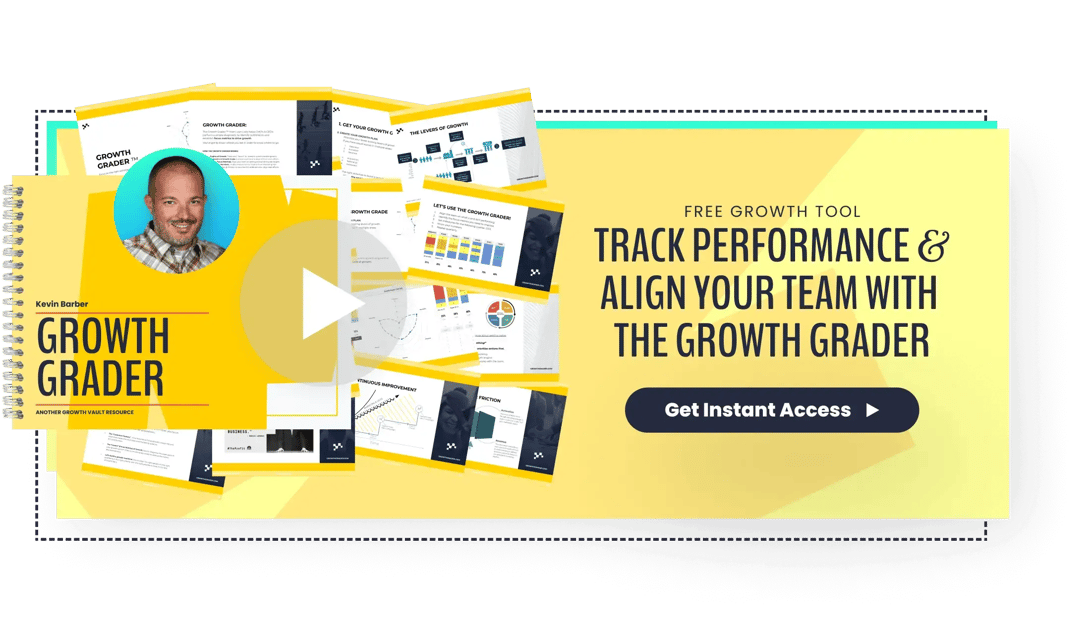
Marketing for Tech Companies: 7 Proven Strategies to Steal
Starting your own tech company can feel like building an airplane and learning to fly it at the same time.
Also, the sky is full of other airplanes of all shapes and sizes going in all different directions, and you’ve got to navigate yours to its destination. OK, enough metaphors. But you get the picture, right?
To lead your tech company to success, you must get your product or service in front of your ideal customers. And how do you do that?
With great marketing. To maximize your marketing return on investment (ROI), you need strategies and tools to engage your audience, position yourself as a thought leader, and drive sales.
This post highlights seven proven strategies to help with marketing for tech companies. Implementing these strategies will transform your plane from a tiny startup to a successful Boeing 747 (OK, last metaphor… probably).
Produce High-Value Content
Producing content for the sake of producing content or hitting targets isn’t the best play. Every piece of content you distribute needs to align with your ideal customer and their journey. Whether you write blogs, record podcasts, or create video assets, your ideal customer should be top of mind.
In this survey from 2021, 62% of respondents say they depend more on content for researching and making B2B purchase decisions than in 2020. Written content attracts customers, visual content helps communicate ideas, and video content helps customers understand your products or services.
To get it right, you need a content marketing strategy. Keep it simple.
- Describe how your customer will feel once they use your product (talk about them, not you or your product).
- Educate, entertain, and inspire your audience while letting them know you can solve their problems.
- Don’t produce content for everyone. Produce content for the people who can and should buy your product or service. It helps to imagine you’re writing or talking to one person.
- Plan where to post your content. Where do your ideal customers hang out? It’s no use posting your content on Twitter if your audience spends much of their time on Youtube.
This doesn’t need to be an expensive strategy. Use the tools at your disposal. Start writing one blog post a week. Use a tool like SEMrush to research keywords. Use your iPhone to record videos, and invest in a USB mic for podcasts.
Use SEO to Reach Your Ideal Customers
If what you’ve heard about search engine optimization (SEO) is that you need to stuff your content with relevant keywords, you’ve heard wrong. An SEO strategy organizes your content by topic to improve your chances of appearing in search results.
Your aim with content is to attract your ideal customers. At Lean Labs, we use topic clusters. We have a list of topics we want to address for our customers, and each piece of content we produce links back to that list.
We build topic clusters around a central pillar page (a long-form guide that answers the search intent of the topic keyword). Each article within the topic cluster includes a link to the main pillar page.
Why?
- All the articles we produce on a particular topic are linked together.
- People find helpful content related to the page they are already on.
- Search engines understand your site and how your content is related.
This strategy goes deep. This article from our friends at HubSpot is a comprehensive guide to building an SEO strategy.
Outside the Box Video Content
It’s no secret that video is the new darling of creative marketing. Here’s why:
- Ninety-six percent of people watch explainer videos to learn about a product or service.
- Eighty-eight percent of people have bought a product or service after watching a brand’s video.
- Seventy-three percent of people want to learn about a product or service by watching a short video.
Naturally, many businesses are creating video content. How can you stand out? Think outside the box. Cliche, I know, but most cliches ring true. As well as creating high-value video content, including case studies, tutorials on your product, how-tos, and client testimonials, start having some fun.
Turn your blog posts into interactive videos. Use animated infographics to visualize information. Or, have fun like the guys over at Dr. Squatch did. This video has almost one hundred and twenty million views and helped grow their business to $100 million.
Don’t strive for perfectionism. Videos don’t need to be expertly filmed and edited. Be creative. You need lots of light, a clean background, and a video editing app that allows you to add text and transition between scenes.
Online Live Events
Hosting online live events isn’t a new concept. Like webinars, live events allow you to promote your solution to a captive audience. Since “the mass illness that shall not be named” of 2020, virtual events have been happening across many industries. You need your event to cut through the noise and attract your ideal audience.
How can you make sure you’re reaching your audience? Most people who want to attend your event will already know who you are. They want to learn more.
But you need to be proactive.
Reach out to key prospects, create an email marketing campaign that you send to your list, post on social media, and create a landing page for your event that includes all the relevant details.
It’s helpful if you have an active email list, but you can also lean on your CRM. If you follow best practices, your lists will have segments, and you’ll send invites and landing pages to a captive audience. Invest in a landing page builder like Sprocket Rocket. It’s easy to use, you don’t need to be a designer, and you can create landing pages in minutes. No, really.
Related: Why Hub Masters Uses Sprocket Rocket for Website Design
Leverage Existing Customers
Your best customers are your best marketers. This is a strategy that works, but it is underutilized. Most businesses focus so much on bringing in new leads and customers that they forget about their current customers. It’s an untapped pool of marketing gold.
Not only can they provide referrals, but you have a relationship with them. If you’re doing a great job, they trust you to deliver. Take the opportunity to upsell and cross-sell. And don’t forget to nurture and continue to educate and engage your customers. Provide massive value.
Providing excellent customer service and a positive experience lowers the churn rate and makes it much more likely that your customers will refer your product or service to a friend. You’ll need to be proactive, though. Ask for reviews and referrals.
Customers are more likely to talk about a bad experience than a good one. Check these statistics out:
- 86% of buyers are willing to pay more for a great customer experience.
- 1 in 26 customers complain about poor service; the rest just leave.
- 89% of consumers are more likely to make another purchase after a positive customer service experience.
How can you leverage existing customers to grow your tech company? Delight your users and create raving fans. To take it one step further, why not start an affiliate program? For example, Bluehost offers a commission of $65 for each qualified referral who signs up through your affiliate link.
Leverage your CRM to create multiple touchpoints for your customers. Continue to engage, educate, and entertain them.
Lean on Your CRM
We’ve touched on this strategy throughout this post, but your CRM platform is a powerful tool in your marketing arsenal. Your customers expect a personalized experience, and the more you know about them, the easier that is to provide.
You want to become a trusted expert and advisor, not a hard seller. Your CRM allows you to track the customer experience from their first touchpoint to the moment they become a customer and beyond. You can guide your customer through the buyer journey and with segmentation, send triggered emails, and create targeted marketing campaigns.
Related: The Top 14 HubSpot Competitors and Alternatives [2022]
At Lean Labs, we champion HubSpot, a scalable platform that lets you see all the metrics you need to take massive action, see results, and make better use of your time. Tie marketing campaigns to customer journey analytics, craft data management to suit your needs, and level up your business.
Build a Community
The modern marketing world is all about building relationships and trust. You must show your audience that you are committed to establishing real connections with the people you serve. Common places to build communities include Facebook, LinkedIn, and YouTube.
Anywhere you can interact with other community members serves as a place where you can interact with your audience, and they can interact with each other. Take Exit Five as an example. Thousands of B2B marketers join the Exit Five community daily to share tactical advice, give and receive feedback, and exchange marketing ideas.
You can’t just start it and jump ship, though. You must be active in the community, providing value, posting regularly, and helping your community thrive.
Marketing for Tech Companies: Find Your Groove
Don’t fall into the trap of implementing all of these strategies at once. Pick two or three and go all in. You can even start with one. Set KPIs and realistic timelines to see traction and measure your progress. Cut what isn’t working, and double down on what is. Find your groove.
Marketing for tech companies is never easy but armed with proven strategies you can steal and the many tools at your disposal; you can build a marketing strategy that will provide ROI and delight your customers.
At Lean Labs, we believe in strategy first. For all of our clients, we know the following:
- It’s crucial to create a blueprint replicating high-growth companies’ go-to-market strategies.
- Then you can build an engaging, high-conversion buyer journey that turns your website into a profitable growth funnel.
- Finally, as a growth team, we deliver huge growth shifts with performance guaranteed.
To see how we deliver a 22 percent quarterly growth rate and how we work with our clients, download the free Growth Playbook.






